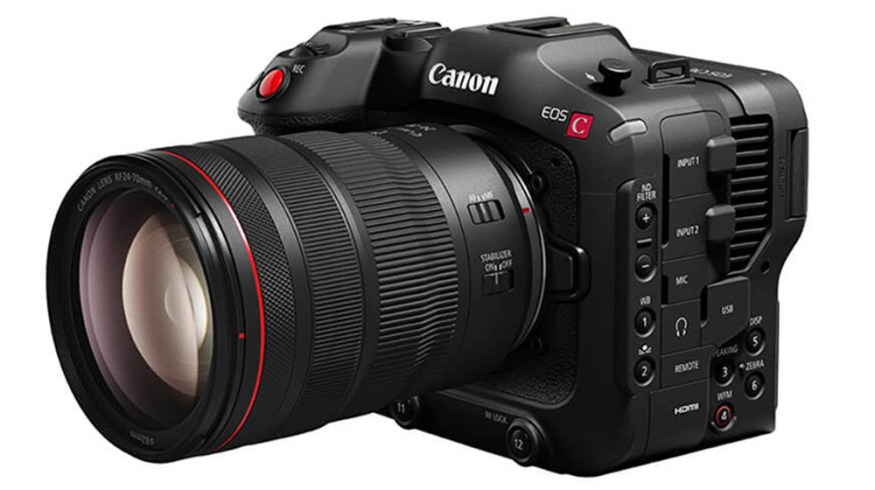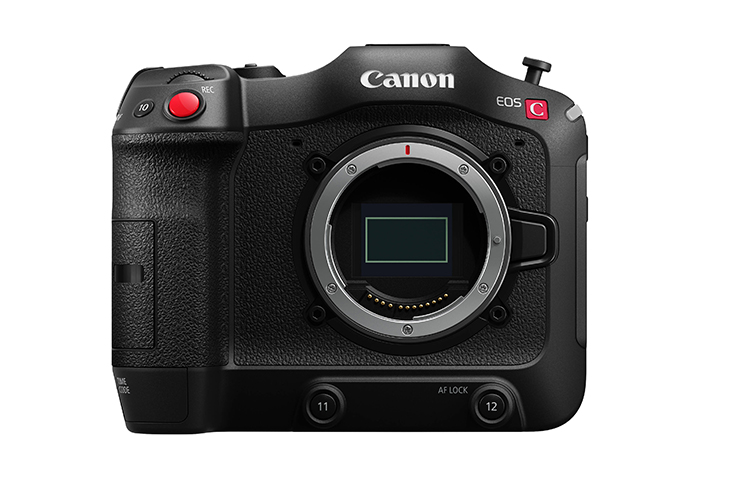
Canon Announces New EOS C70, Their First RF-Mount Cinema Camera
No 8K with this one, but the new Canon EOS C70 shoots 4K 120p and includes all the enticing bells and whistles that filmmakers and video pros love.
With the industry still reeling (and a little polarized) from the announcement of the Canon R5 8K digital video camera, the brand dropped another major announcement at the Canon Vision press conference on September 24, 2020 — the new EOS C70, the company’s first RF-mount cinema camera.
While the EOS C70 may underwhelm in the specs department when stacked up against the R5, it’s actually a very capable cinema camera that should pack more of a practical punch than the 8K R5. Let’s take a look at the new EOS C70 to see if it’s a good option for your film and video projects.
The New Canon EOS C70
As a fan of classic Canon DSLRs like the 5D and its current cinema camera line, I’m of the mind that the C70 should be a solid middle option between the two. It looks more film/video friendly than the dual-hybrid functionality that the mirrorless EOS R line chases with photo and video. And at a price point around $5,000 we’re just in a realistic ballpark for the run-and-gun video crowd. Plus with a RF-mount, it should be a good camera partner for those who are already working with Canon’s new line of R lenses.
I’d say this is an intriguing option for film and video professionals, though there’s a chance it might have a tough time standing out in a crowded market since it lacks a killer feature or groundbreaking technological advancement.
Full Specs for the Canon EOS C70
- Super 35 Dual Gain Output (DGO) Sensor
- 4K 120p, 2K Crop 180p HDR Capture
- Canon Log 2, 3, PQ & HLG Recording
- RF Lens Mount / EF Mount with Adapter
- DIG!C DV7 Image Processor
- 16+ Stops of Total Dynamic Range
- Built-In ND Filters
- Auto ISO & Gain
- Dual Pixel CMOS AF & EOS iTR AF X
- 1 BNC Timecode
- 2 Mini-XLR Audio Inputs
- Dual SD Card Slots, LUT/Long GOP Support
Price: $5,499 (pre-order for late November)
In an era where brands are chasing specs and technological breakthroughs with every new camera, the C70 is lacking any big numbers or applications. Nonetheless, with a Super 35 sensor, while it isn’t full frame and it obviously isn’t 8K — or even 6K — the C70’s 4K RAW is completely respectable. (Not sure how you feel about all of that? Read this article to decide for yourself if 8K actually matters.)
Going off positive aspects of these initial specs, the C70 remains intriguing. We’ve got 4K 4:2:2 10-bit (ALL-I and IPB) at up to 120 fps and 4K RAW at up to 120 fps when recording externally. We have 16+ stops of dynamic range, built-in ND filters, auto ISO & Gain controls, dual memory card slots, and two mini-XLR audio inputs. With all of this working together, the C70 is perfectly practical for more advanced shoots.
Thoughts on the C70 for Filmmakers
If this were a few years ago, when Canon was still the dominant force in the video industry, the C70 would be a wildly welcome addition to any filmmaker’s arsenal. It promises to be a solid option for shooting documentary footage on the run. It could also serve as a reliable A or B camera for an intense week of corporate video shoots. The 4K footage should be consistent and high-quality enough for pretty much any filmmaking need.
However, if you’re already adjusting to the 6K+ or 8K life, this might seem like a less-than-interesting step backward. Really, the oddest part of this C70 announcement is that it follows the announcement of the R5, with which it will compete. And, perplexingly, the C70 actually costs over a $1,000 more than the R5.
Ultimately, the Canon EOS C70 will be for those who are already in on Canon — especially those who like working with the company’s cinema camera line and have already invested in RF lenses for the majority of their production needs.
For more camera news and reviews, check out these articles below.






